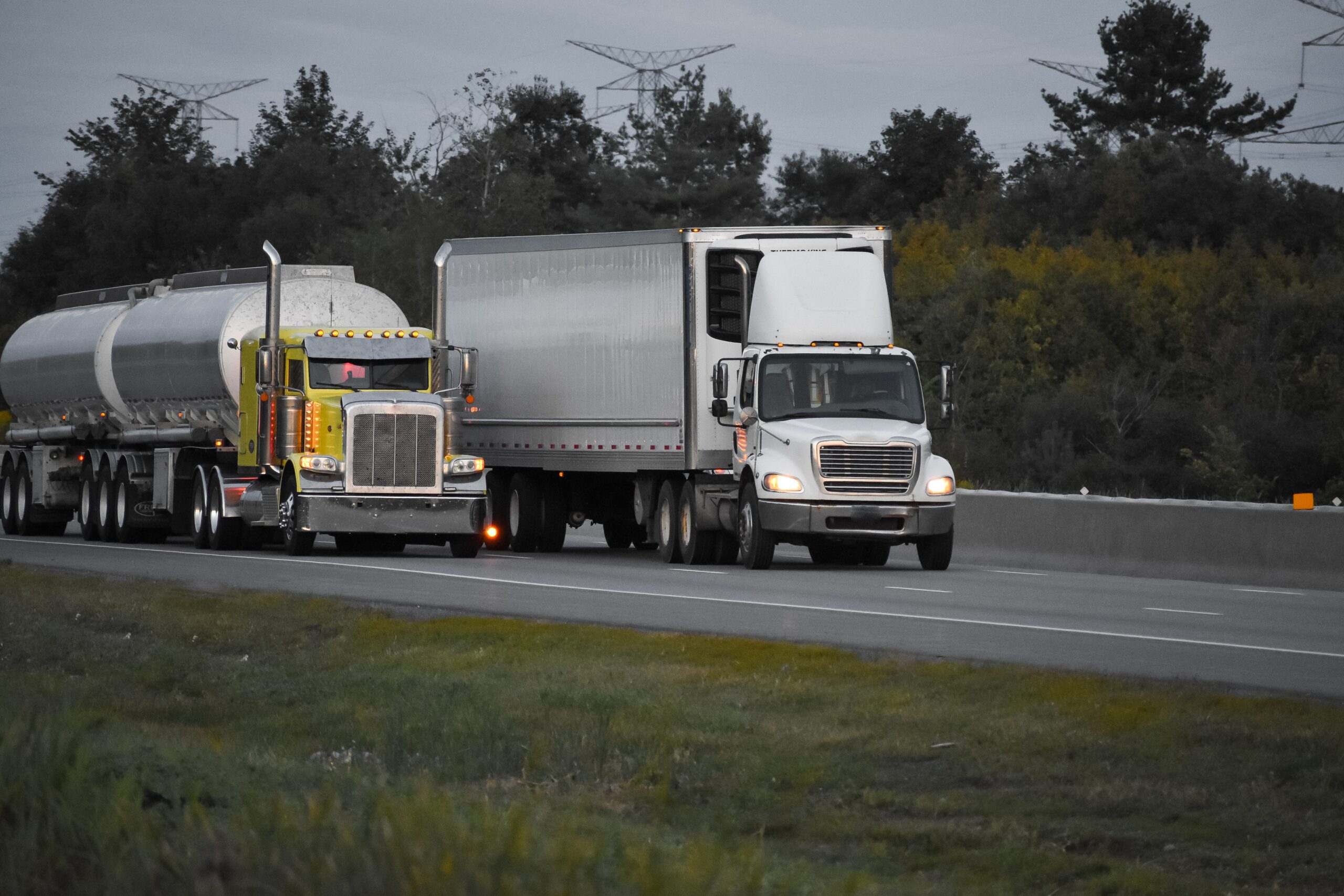How a Lawyer Can Strengthen Your Semi Truck Accident Lawsuit

Dealing with the aftermath of a semi-truck accident can be very difficult. Victims often face serious injuries, financial problems, and complicated legal issues. Semi-truck accident lawsuits involve complex issues of responsibility, proof, and payment, making them difficult to navigate in order to achieve justice. These cases are complex and essential, involving deciding who is at fault and getting compensation for medical bills and mental distress.
This guide unpacks the critical components of semi-truck accident lawsuits, helping you navigate the process and understand how the right legal strategies and the assistance of a semi truck accident lawyer can make all the difference.
Inside the World of Semi Truck Accident Lawsuits
Semi-truck accident lawsuits involve intricate legal and technical details critical for achieving fair outcomes. Victims may face severe injuries, financial losses, and emotional challenges, making thorough legal representation essential.
Key Elements of a Semi Truck Accident Lawsuit
Determining liability forms the foundation of a semi accident lawsuit. Various parties, such as trucking companies, drivers, maintenance providers, and cargo loaders, may share responsibility. Investigations often focus on truck maintenance records, driver logs, and the loading process to identify negligence.
Evidence collection also plays a very important role. Attorneys gather data from accident reports, eyewitness accounts, and electronic logging devices to reconstruct events. Like hours-of-service rules, federal regulations governing trucking operations become pivotal in establishing fault.
Financial compensation often includes medical bills, lost income, property destruction, and pain and suffering. Victims can sometimes claim punitive damages if egregious negligence contributed to the incident.
Common Causes of Semi Truck Accidents
Several factors commonly lead to semi-truck accidents. Driver fatigue is a frequent issue, stemming from long shifts and inadequate rest periods. Speeding and failure to obey traffic signals also contribute significantly.
Vehicle issues, such as neglected maintenance or defective parts, can result in mechanical failures like brake malfunctions or tire blowouts. Improperly secured cargo or overloading impacts a truck’s stability, increasing the likelihood of rollover crashes.
Environmental conditions also pose challenges. Poor road designs, construction zones, and adverse weather, including heavy rain or snow, often exacerbate risks. Accurately identifying these causes is crucial for building a strong semi-truck accident lawsuit.
Determining Liability in a Semi Truck Accident
The backbone of a semi-truck accident lawsuit is figuring out who is legally responsible. This process involves identifying all liable parties and understanding how their actions contributed to the crash.
Responsible Parties
Multiple parties may share responsibility for a semi-truck accident. These typically include the truck driver, the trucking company, the vehicle manufacturer, or the maintenance provider. A driver’s negligence, such as distracted driving or speeding, often plays a direct role. Yet, liability frequently extends beyond individual actions.
Trucking companies may bear fault when they fail to properly train drivers, enforce hours-of-service regulations, or maintain their vehicles. For instance, inadequate truck inspections can lead to brake failures, which cause severe collisions. Manufacturers could sometimes be accountable if defective parts contributed to the incident. Maintenance providers are another critical consideration, as overlooked repairs or faulty servicing practices endanger others on the road.
Evidence like black box data, driver logs, and maintenance records helps determine each party’s level of accountability. A comprehensive investigation is vital for navigating a semi-truck accident lawsuit, as negligence may span several entities.
The Role of Comparative Fault
Comparative fault principles significantly impact compensation in a semi accident lawsuit. These rules assess how much responsibility each party has for causing the collision. Victims found partly at fault may have their settlements reduced proportionally to their level of liability.
Many states follow a modified comparative fault system. For example, if a victim holds 30% of the fault, they can still recover 70% of the awarded damages. However, states applying the 51% bar rule prevent individuals with more than 50% liability from seeking compensation. This means the higher the shared fault, the lower the recoverable damages.
Contributory negligence policies, which are stricter, bar any recovery if the victim is even 1% at fault. Additionally, settlements often reflect the complexity of determining these fault percentages, emphasizing the essential role of accurate evidence.
Understanding liability and comparative fault principles creates the foundation for a successful semi-truck accident lawsuit, as it ensures fair allocation of responsibility and damages.
Damages in a Semi Truck Accident Lawsuit
Those impacted by a semi-truck accident lawsuit face extensive consequences, both financially and emotionally. Understanding the types of damages available is critical for securing just compensation.
Financial and Economic Damages
Victims often claim financial damages to address specific monetary losses. These include medical bills for ambulance services, surgeries, and ongoing treatments. Lost wages resulting from an inability to work are also a significant factor. For severe injuries, future earning potential could be calculated if the victim cannot resume their previous job. Property repairs or replacement, such as vehicle damage, also fall under this category.
Trucking insurance policies typically carry large coverage amounts, frequently exceeding $750,000. Such policies account for the high costs of medical care and the expenses related to property damage. Expert witnesses may assist in calculating these financial losses, ensuring accurate settlements.
Non-Economic Damages
Non-economic damages compensate victims for hardships that aren’t easily quantifiable. This category includes pain and suffering faced during recovery, emotional distress caused by trauma, and long-term impacts like loss of enjoyment in daily activities. Permanent disabilities, such as scarring or disfigurement, often lead to more prominent compensation figures due to their life-altering nature.
These damages aim to recognize the profound personal impact caused by an accident. Because they vary widely by case and jurisdiction, lawyers often assess these claims carefully to present accurate figures within legal parameters.
Punitive Damages
In cases involving extreme negligence, courts may award punitive damages. Their purpose goes beyond compensation; they penalize at-fault parties and deter future wrongful acts. This typically applies when actions like severe violations of trucking regulations or reckless behavior directly contributed to the crash.
Although such awards are less common than compensatory damages, they can significantly increase the final settlement amount. Factors like repeat offenses or deliberate misconduct weigh heavily in their determination.
Factors Affecting Semi Truck Accident Settlements
Several aspects influence the outcome of a settlement in a semi-truck accident lawsuit. Each factor helps determine the compensation amount for victims and how much responsibility falls on the involved parties.
Severity of Injuries and Damages
The extent of injuries significantly impacts settlement values in a semi-truck accident lawsuit. Victims with severe injuries, such as spinal cord damage, traumatic brain injuries, or organ rupture, often receive more compensation than those with minor harm, such as soft tissue damage or uncomplicated fractures. Permanent disabilities, disfigurement, or chronic pain are also integral in establishing settlement amounts. Additionally, damages to vehicles or other property shape the overall value. The higher the medical costs and repair expenses, the larger the compensation will likely be.
Insurance Policies and Limitations
Insurance coverage plays a central role in semi accident lawsuit outcomes. Semi-truck insurance policies typically have higher coverage limits than those for personal vehicles due to the potentially severe nature of truck accidents. While these policies often exceed $750,000, caps on payouts can restrict the maximum compensation. Limitations depend on the terms of the policy and state-specific regulations. If multiple parties share blame, insurance carriers might divide liability based on comparative fault, reducing final payouts in some cases.
Settlements vs. Trial Outcomes
Many semi-truck accident lawsuits are resolved through settlements, offering faster resolutions and reducing court-related costs. Settlement negotiations often focus on compensating economic losses, including medical bills, lost wages, and non-economic damages like emotional distress. However, when settlements fail, lawsuits progress to trial, where outcomes depend on judge and jury decisions. Trials carry increased risks but could potentially yield higher compensation amounts, especially if the evidence demonstrates egregious fault by the responsible party.
The Legal Process for Semi Truck Accident Lawsuits
Navigating a semi truck lawsuit demands thorough preparation, from filing a claim to potentially going to trial. Each step involves gathering evidence, negotiating settlements, and adhering to timelines.
Filing a Claim and Gathering Evidence
A semi-truck accident lawsuit begins with the injured party, or plaintiff, filing a claim. This legal document specifies the injuries sustained, the responsible parties, and the compensation sought. Evidence collection is critical at this stage to strengthen the case.
Photographs from the scene, including vehicle damage and skid marks, serve as visual proof. Accident reports, eyewitness statements, and electronic logging devices provide essential details on liability. Records like driver logs and maintenance histories often reveal noncompliance with federal regulations, such as hours-of-service violations. Establishing fault requires a meticulous review of these sources.
Settlement Negotiations and Trial
Settlement discussions often follow the filing process. During these negotiations, legal representatives assess damages and propose compensation terms. This phase allows both parties to avoid extended court proceedings while addressing the victim’s losses.
If discussions fail, the case proceeds to trial, where lawyers present arguments and evidence before a judge or jury. Pretrial motions, like excluding specific evidence, can shape the courtroom strategy. Trials involve rigorous presentations, often relying on expert testimony and accident reconstructions to substantiate claims.
Timeline for Resolving a Case
The duration of a semi accident lawsuit varies depending on its complexity. Cases involving settlements may conclude within a few months. However, lawsuits that go to trial often extend for a year or longer. Factors like evidence discovery, legal processes, and court backlogs influence timelines.
Efficient case progression depends on detailed preparation and strong legal representation. Structured filings, thorough investigations, and proactive communication with insurers or opposing counsel help streamline resolutions while pursuing rightful compensation.
Why Hiring a Semi Truck Accident Attorney Matters
Legal representation can make a significant difference in a semi-truck accident lawsuit. These cases often involve complex laws and multiple parties, such as trucking companies, maintenance providers, and drivers, each potentially sharing fault. Attorneys specializing in semi truck accidents possess in-depth knowledge of federal and state trucking regulations, like hours-of-service rules, that often factor into determining liability.
Settlement negotiations in semi accident lawsuits frequently involve commercial insurance companies. These insurers may aim to minimize payouts by offering settlements that undervalue the victim’s injuries, medical expenses, or lost income. A skilled lawyer ensures victims receive compensation that reflects the full extent of their damages, including long-term effects such as physical impairments or emotional distress.
Navigating the legal system without guidance can be overwhelming, especially when dealing with semi truck accident lawsuits. Attorneys streamline this process by handling intricate paperwork, gathering evidence, and working with experts to build a strong case. From black box data to maintenance records, they identify key details that strengthen claims, ensuring accountability for all responsible parties.
Understanding comparative negligence laws is crucial for fair compensation. When fault is shared, as often happens in semi accident lawsuits, specialized attorneys know how to argue for the highest possible settlement effectively. Their expertise levels the playing field, particularly against large trucking firms or powerful insurance companies.
Conclusion
Pursuing a semi truck accident lawsuit requires a deep understanding of the legal process, thorough evidence collection, and skilled representation. Victims face significant challenges, but with the proper legal support, they can secure the compensation needed to rebuild their lives. Experienced attorneys play a crucial role in navigating the complexities of these cases, ensuring justice is served and accountability is upheld.



